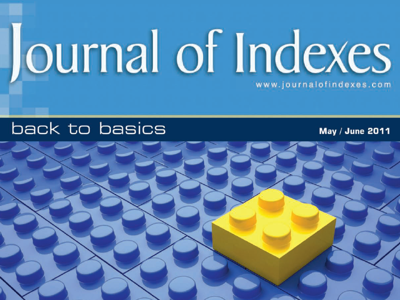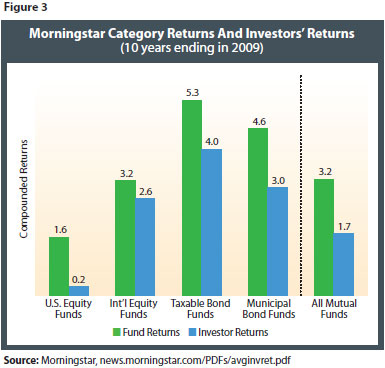
I read with interest Richard Ferri’s article in The Journal of Indexes, “The Power Of Passive Investing.”
One of the most interesting sections reads:
Morningstar weighed in with a comprehensive study on dollar-weighted versus time-weighted returns. They calculated the 1-, 3-, 5- and 10-year time-weighted returns and dollar-weighted returns through 2009 for open-end mutual funds based in the United States.
The Morningstar study found significant deficiencies in investor timing decisions. U.S. equity fund investors experienced a negative 1.4 percent gap in return over 10 years while bond fund investors experienced a negative 1.3 percent gap over the same period. In aggregate, the timing gap was negative 1.5 percent across all asset classes and sectors.13 Figure 3 illustrates the difference in major asset class returns for the period.
Understanding a dollar-weighted versus time-weighted returns is explained best by Krisan Marotta, the PortfolioCenter expert. But in simple terms, investors did not experience the full return of the fund because they moved into the fund after it went up and moved out of the fund after it went down. By trying to chase returns they under-performed the very funds they were invested in by about 1.5%.
That means if your investment advisor simply talked you out of chasing returns and moving in and out of what might otherwise be good funds they might earn their fee and then some.
This is one benefit of a disciplined approach to investing.
